Spring is in the air and, for a lot of people, so is hay fever. If you’re one of those people that has a hard time transitioning between the seasons, then this is for you.
Ayurvedic medicine, the sister science of Yoga, is a 10,000-year-old framework of medicine that comes out of India. Way back then, scholars wrote about how humans interact with each other, the planet that we live on, the seasons that we live in, our life cycles, the time of day, our food, our exercise, our thoughts, our emotions, and our belief systems.
Everything is unique, and it can be broken down into these three Doshas:

- Vata
- Pitta
- Kapha
We each are our unique composition of Vata, Pitta, and Kapha.
Vata, Pitta, and Kapha are Sanskrit words. Ayurveda says that we’re the microcosm of the macrocosm of the universe. What that means is that everything that’s outside is also inside of us—”as above, so below.” This means all the elements and minerals outside of us are also inside of us in our unique composition. Now, I always say if we’re a microcosm of the macrocosm of the universe, then that means we are just like dirt.
You can think of three different kinds of dirt that will represent the dosha types or the different, unique being that you are. Here’s what I mean:
Vata is like the desert sand and has a lot of air and space between each grain.

This type of person is thinner, has thinner hair, thinner lips, usually short or tall, and has some vivacious qualities. He/she is usually the life of the party, has lots of energy, burns out fast, learns quickly and then forgets quickly, can be a little bit of a space cadet, a little bit flaky.
When they are imbalanced, their hollow or air-filled spaces in their body can become impacted. It may exhibit as constipation, dizziness, vertigo, tinnitus, the ringing in the ears, wheeziness of your bronchioles. Anything hollow is associated with Vata. Your joints can become dry and pop and click and you might have pain that moves to different parts of your body each day. You may experience ADD-like symptoms or insomnia. These are all attributes of a Vata imbalance.
Just like the desert sand blows everywhere and causes a lot of chaos when the wind picks up, so does the vata person experience mental, physical, and emotional chaos when the wind is blowing pollen around in the spring. At this time of year keep your head and neck covered and warm to avoid chaos in your dosha expression.
Pitta is more like the rainforest soil—fertile and hot.
Pitta is composed of fire and water. When somebody’s predominantly Pitta, it means they’re sharp intellectually, can be sharp-tongued, or can be very judgmental. Usually, they’re judgmental of themselves first, and then it leaks out onto other people. They are fast to anger when hungry. (Never get between a Pitta person and the dinner table!) They have a strong metabolism or fire.
The rainforest soil is the soil a Pitta person would be like. Imagine if a bird is flying across the top of a rainforest and drops a seed out of its beak, it doesn’t have to be cultivated before it bears fruit and grows. That’s the way a Pitta mind is. It’s very creative and will have enough fire to generate harvest from that seed.
 The Pitta imbalance is inflammation. Inflammatory responses like the red, itchy eyes someone with hay fever experiences.
The Pitta imbalance is inflammation. Inflammatory responses like the red, itchy eyes someone with hay fever experiences.
Inflammatory responses of the joints, digestive system, menstrual disorders, skin or anything red is a Pitta imbalance. Red, ruddy undertones and a medium-build body are Pitta characteristics physically. I’m a Pitta-Kapha person.
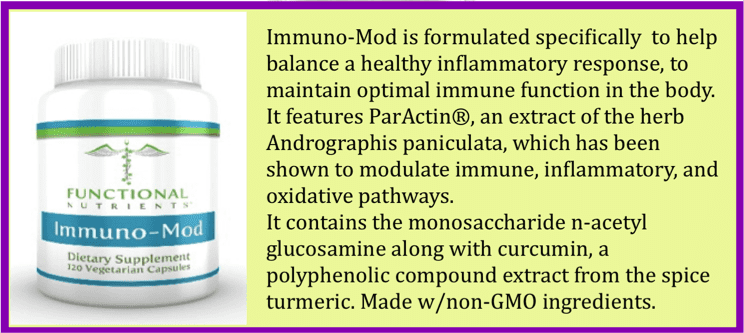
Kapha is more water and earth and could be thought of as clay.
If you poke a stick in clay, the clay is not going to move or shift, whereas if you poke a stick in sand, the sand shifts around.
For a Kapha person in the spring, expect more mucus and water retention, because like clay, the kapha dosha type retains water and extra weight easily. If a Kapha person even looks at sugar, they can gain weight. Dairy, grains, sugars, and lots of fruit are not great for Kapha. Dairy is also mucous producing for kapha, so it’s best to avoid dairy—at this time of year especially.
I’m in the Pacific Northwest. As I write this, I’m on a ferry going across the water. If I were to go outside, it would be Vata aggravating because it’s windy, and it’s quite cool. It’s also rainy at this time of year in the Pacific Northwest, and so I’m going to be doing things that are warming for me. For instance, lots of wonderful, warming spices will help prevent you from getting mucus build-up in your sinuses and post nasal drip.
Ginger is your friend if you live in this kind of a climate. I buy whole organic ginger root, lots and lots of it; 6, 10, 12 of them at a time. Then I chop them up into little discs and put them in a Ziploc bag and throw them in my freezer.
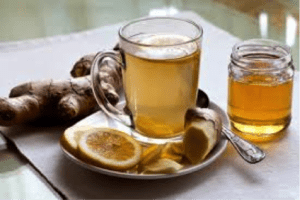 After I exercise in the morning, I’ll take three or four little ginger discs, and put them into a pot of boiling water. I’ll simmer that for 15-20 minutes while I’m getting ready for my day. I strain the water, and there’s my ginger tea, plus I add a squeeze of fresh lime. If you want a little sweetener, add a little stevia. Sip it all day long. It helps dry up any of that mucus build-up that you might be getting at this time of year.
After I exercise in the morning, I’ll take three or four little ginger discs, and put them into a pot of boiling water. I’ll simmer that for 15-20 minutes while I’m getting ready for my day. I strain the water, and there’s my ginger tea, plus I add a squeeze of fresh lime. If you want a little sweetener, add a little stevia. Sip it all day long. It helps dry up any of that mucus build-up that you might be getting at this time of year.
Nature provides the most amazing antidotes for problems that we have at this time of year. – Tweet this.
Spring means that the days are getting longer. We have more light, and we’re coming out of the winter darkness—that hibernation time where we’ve been kind of incubating. Well, I don’t know about you, but in spring, when the light fills my bedroom earlier, I really want to get out of bed and go exercise with my dogs.
I love getting out when it’s light outside; there’s a surge of energy that courses through me when springtime comes. The little hyacinths, crocuses, daffodils, and tulips are poking their heads up through the cold earth after wintertime. There’s a lot of energy and a lot of life as the earth is reborn after the death of winter.
That’s why we do spring-cleaning. We want to organize everything. I don’t know if you are like this, but I want to organize all my closets and drawers. I want to make sure that my house is cleaned out. You’re flinging open the shutters, opening the windows, and letting fresh air through your home. You’re beating out the carpets, getting rid of all the dust of the winter. It’s the same thing in your body. You want to clean that out too. So, nature provides us with all that we need.
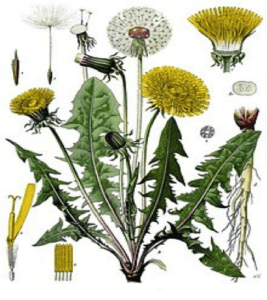
Dandelions grow where I live and, a lot of times, people think of those as noxious weeds and pour poison over the top of them, but they are fantastic for cleaning out your liver and your kidneys.
Dandelions are a wonderful kidney tonic. – Tweet this.
When I make a smoothie, or juice my vegetables in the morning, which I do every morning, especially at this time of year, I’ll put dandelion greens in there. It’s great for the kidneys.
Another plant here in the Pacific Northwest that I’ll be harvesting in the next few weeks is the stinging nettle. Obviously, I’ll have gloves on and some hardy kitchen shears, and you can go out and get those nettles when they’re brand-new and then dry them. What I do is make cold infusions with them. I’ll just stuff a Mason jar with some nettles, pour some boiling hot water over the top of that, and then let it sit out on the counter overnight. In the morning, you’ve got a great nettle infusion. You can also steam them. You can put them in your soups. You can put them also through a juicer. They’re just great because they’re so fantastic for getting that histamine response to calm down and make sure it doesn’t flare in the first place.
Ginger and nettles are just great.
It’s time for detoxification. – Tweet this.
Please, continue reading Springtime Brings Hay Fever! (Part II)
Big Love,
Dr. Keesha Ewers
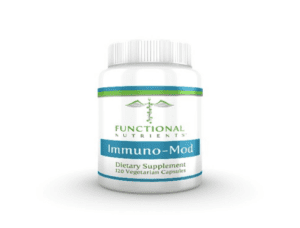 PS: I recommend Immuno-Mod Special Deal for March!
PS: I recommend Immuno-Mod Special Deal for March!
Immuno-Mod has been formulated specifically for autoimmune conditions to help balance a healthy inflammatory response, necessary to help maintain optimal immune function in the body. It features ParActin®, an extract of the herb Andrographis paniculata, which has been shown to modulate immune, inflammatory, and oxidative pathways. It contains the monosaccharide n-acetyl glucosamine along with curcumin, a polyphenolic compound extract from the spice turmeric. Both compounds help to support a healthy inflammatory response.
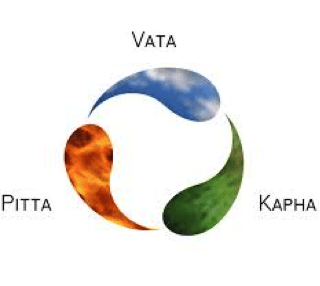
Leave a Reply
You must be logged in to post a comment.